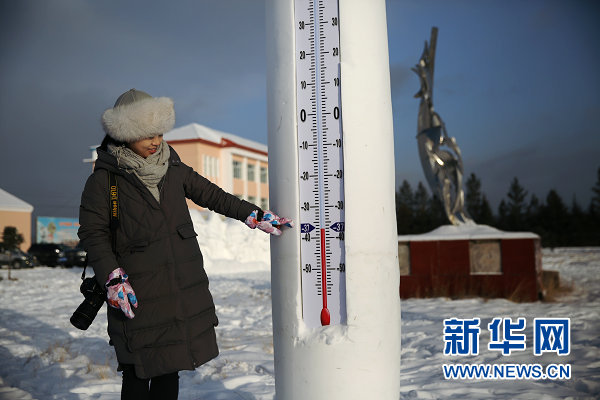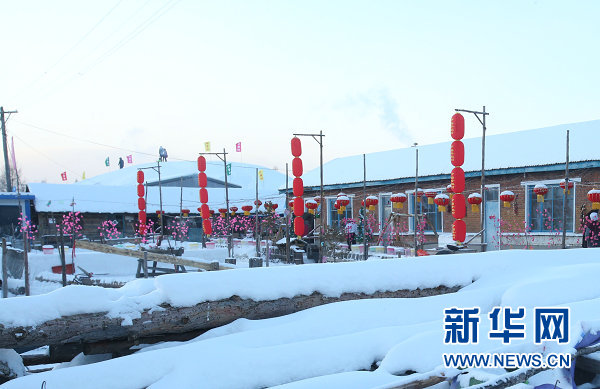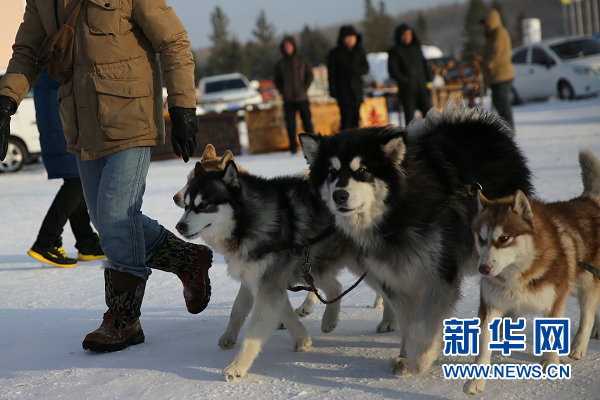Pole of Cold Festival opens on Christmas Day
(chinadaily.com.cn)
Updated: 2016-12-30
 |
|
Tourists are photographed with a reindeer at the fourth China Pole of Cold Festival, Dec 25, 2016. The festival opened on Dec 25 in Genhe, Inner Mongolia autonomous region, and will run until February. Genhe, a city under the administration of the Hulunbuir League, is located at the northernmost tip of North China’s Inner Mongolia autonomous region, and is recognized as the Pole of Cold in China. The average yearly temperature is -5.3 C, while the lowest temperature recorded is -58 C. [Photo/Xinhua] |
 |
|
Santa Clause and a reindeer are photographed at the fourth China Pole of Cold Festival. The festival opened on Dec 25 in Genhe, Inner Mongolia autonomous region, and will run until February. Genhe, a city under the administration of the Hulunbuir League, is located at the northernmost tip of North China’s Inner Mongolia autonomous region, and is recognized as the Pole of Cold in China. The average yearly temperature is -5.3 C, while the lowest temperature recorded is -58 C. [Photo/Xinhua] |
 |
|
A huge thermometer placed at China’s Pole of Cold reads -30 C, Dec 25, 2016. Located in the northern part of Genhe city, which is the northernmost city of North China’s Inner Mongolia autonomous region, the Lengji village is noted for being extremely cold in winter. Lengji means “pole of cold”. [Photo/Xinhua] |
 |
|
Lengji village is covered in thick snow. Located in the northern part of Genhe city, which is the northernmost city of North China’s Inner Mongolia autonomous region, Lengji village is noted for being extremely cold in winter. Lengji means “pole of cold”. [Photo/Xinhua] |
 |
|
Alaskan Malamutes are one of the symbols of Lengji village. Located in the northern part of Genhe city, which is the northernmost city of North China’s Inner Mongolia autonomous region, the Lengji village is noted for being extremely cold in winter. Lengji means “pole of cold”. [Photo/Xinhua] |

High-speed train debuts in Inner Mongolia
A bullet train departed Hohhot East Railway Station for Ulanqab marking the start of high-speed rail services using Inner Mongolia’s first newly-laid high-speed railway on Aug 3.
